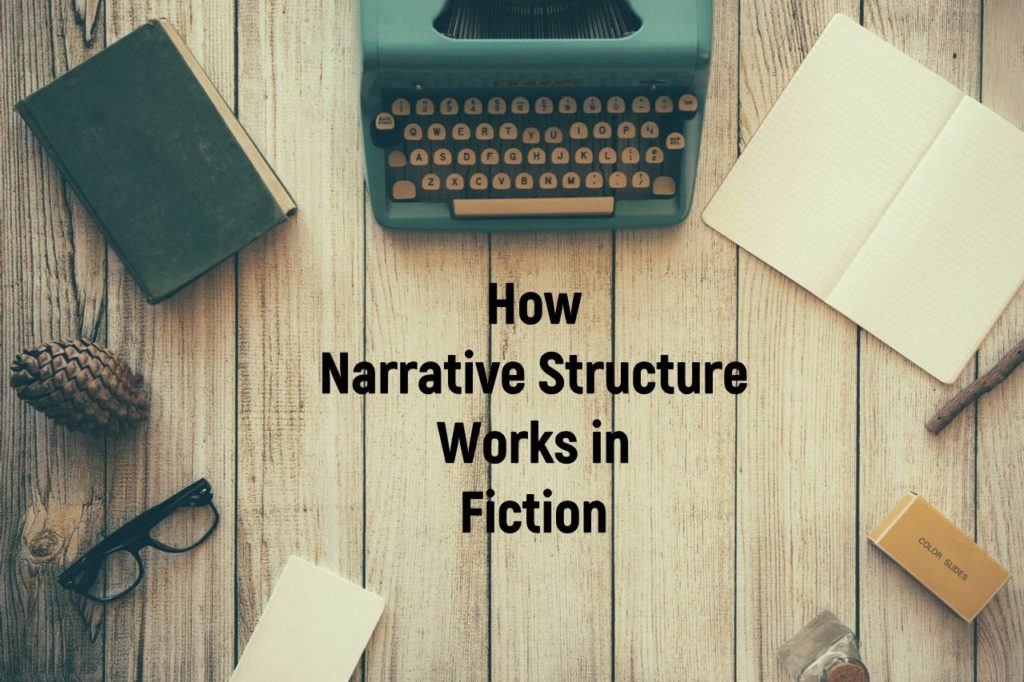And How It Differs from Plot
Have you ever wanted to yell at someone, “If you hadn’t done __________, we wouldn’t be in the mess we’re in now”?
Actions have consequences. And often one action produces a consequence that requires another action, and so on—and on.
This cause-and-effect pattern works in fiction just as it does in life. A fictional character wants something and takes some action toward getting it. That action produces a new situation that requires a second action, and so on. The plot, as they say, thickens until the fictional world becomes quite complicated. Plot is chronological, starting at the beginning and progressing to the end.
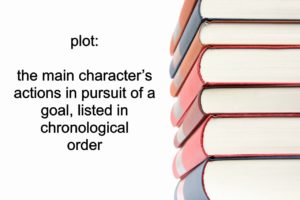
But telling a story in chronological order often is not the most interesting or dramatic way to present it. Authors know that readers want to be pulled into a story right away and that if they don’t write openings that do this, readers will pick up another book instead. (See 5 Irresistible Introductions in Fiction.)
Authors therefore commonly look for some place well along in the plot sequence that will catch readers’ interest. They throw us right into the middle of the action, probably at the point where the main character’s companion is about to scream, “If you hadn’t done __________, we wouldn’t be in the mess we’re in now!”
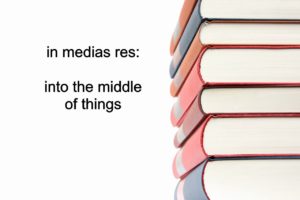
Once readers have been drawn into the story by an effective opening, they have to learn about the earlier plot points to understand fully the significance of what’s happening. More and more television shows now start dramatically, with a scene such as a shoot-out, then move into a sequence labeled something like “24 hours earlier” to fill viewers in. Authors must devise some similar technique for giving readers the background information they need. Both in books and in TV shows the earlier plot points—everything that occurred before the dramatic opening—are called the backstory. A novel’s narrative structure is the order in which the author presents the various events that make up the plot’s chronological timeline.
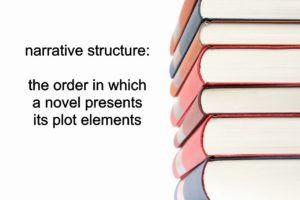
In identifying a novel’s narrative structure it’s often helpful to think of the point at the beginning, when we are thrown into the action, as the novel’s present time. Passages that fill in some of the backstory are called flashbacks because they often appear as memories, when a character’s brain flashes back to something that occurred earlier. An effective narrative structure allows us to keep track of what happened earlier—the backstory—and what is happening right now and into the future.
You may sometimes see the terms plot and narrative structure used interchangeably, although technically they are different. If we criticize a character’s action as being impossible or incredible, we are criticizing one of the novel’s plot elements. But when we complain that a novel didn’t grab our interest or that the story dragged, we are probably talking about narrative structure rather than plot. An effective narrative structure generally keeps the story moving by alternating sections of backstory with actions occurring in the novel’s present.
Example: Everything I Never Told You by Celeste Ng
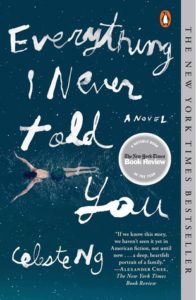 Ng, Celeste. Everything I Never Told You
Ng, Celeste. Everything I Never Told You
Penguin, © 2014
ISBN 978–1–101–63461–5
I’ve chosen this novel to illustrate the effect of narrative structure for two reasons:
- It’s an apt illustration.
- Because the key plot element occurs in the first sentence, I can discuss it without giving away anything that would spoil your reading of the novel.
Here are the novel’s first two sentences:
Lydia is dead. But they don’t know this yet.
Notice how that first sentence immediately captures the reader’s interest: Who is Lydia? How and why has she died?
But notice, too, how the second sentence shifts the focus just slightly: Who are “they”? Why don’t they know this yet? When, why, and how will they find out? And what will happen when they find out?
In this novel Lydia Lee is a high school student in a small Ohio town in the 1970s. She’s the middle child in her family. Her father, James Lee, is the American-born son of Chinese immigrants, and her mother, Marilyn, gave up her dreams of becoming a doctor to get married and raise a family. As a typical teenager, Lydia wants nothing more than to fit in at school, but her Chinese ethnicity makes her stand out in their small community. The only people who can understand her at all are her older brother and her younger sister.
Everything I Never Told You isn’t just about Lydia’s death. It’s about Lydia’s death in the context of her family’s lives, and the novel’s narrative structure creates that context. Imagine how different the novel would be if Lydia were to tell her own story. But that’s point of view—and that’s another essay.
Many contemporary writers are experimenting with narrative structure as a way to help shape their book’s meaning. My next article will look at a few of those books.
© 2017 by Mary Daniels Brown

